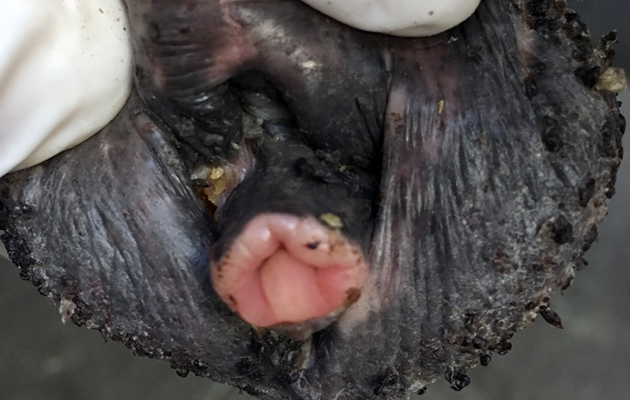When a gelding or stallion extends or lets down his penis, you may see an accumulation of material called smegma. This natural substance is produced by the skin of the penis and prepuce (foreskin), providing a protective covering for these sensitive areas.
Smegma can build up in the depression at the end of the penis, the urethral fossa, to form an accumulation called a bean. This can vary from something the size of a kidney bean to a lump as large as a walnut, which protrudes from the fossa. A bean can become very hard, as some of the salts from the urine can mix with the smegma and solidify.
There are horses that never develop excessive smegma or suffer this build-up. Others are more prone to developing beans which, even when removed, will reoccur in a short period of time.
It is rare a horse will show any signs that indicate the presence of a bean in the fossa. But the small number that do accumulate large beans may display abnormal spraying or dribbling of urine, or adopt a urinating position before withdrawing the penis and moving a few yards to do the same again.
Some horses seem to worry that the spraying of urine will catch their legs, while others appear not to care. A horse irritated by a large bean may lift a hindleg up to his penis, or belly kick, behaviour that may be mistaken for early signs of colic.
Beans are not a cause of sheath swelling. A swollen sheath can be due to a number of reasons: excess weight in a gelding; irritation by midges which causes discomfort or rubbing, or liver disease or protein loss caused by parasites (worms) that creates oedema (fluid accumulation) along the belly.

Handle with care
Bean removal is likely to make life more comfortable for a horse with a large accumulation that is stretching the thin lining of the fossa. However, some horses resent the procedure and may require sedation, so it is sensible to seek veterinary assistance.
This also means that your vet can check the penis and sheath for any abnormal growths. Forcing the removal of large beans yourself can damage the fossa and make a horse wary of examination in that area in the future.
Claims that beans can cause poor performance or lameness have yet to be clinically supported. Such problems are more likely to be related to musculoskeletal issues — for example, back pain or issues with the pelvis or neck. Alternatively, they could be caused by gastric ulcers or training methods.

Is it wise to wash?
Smegma can be dry and flaky or moist and stronger smelling: both types are normal. It is only us, as owners, who find smegma undesirable and feel the need to remove it.
Too much sheath cleaning can be harmful to your horse, as it is likely to destroy the normal protective bacteria on the penis and can even encourage the growth of inappropriate, harmful bacteria. The effects of any cleaning will always be short-lived anyway, because smegma will build up again naturally within 7-10 days.
The penis shaft can be cleaned of flaky smegma, if your horse allows it, sometimes without water. Wear a pair of disposable gloves and gently lift the flakes away. Use warm water, if necessary, but no soap as this can irritate. Avoid aggressive scrubbing, which can cause abrasions and possible skin infection.
Excessive and particularly foul-smelling smegma should be checked out by your vet in case other medical conditions are present, such as melanomas (found mostly in grey horses), squamous cell carcinoma or herpes virus.
Ref Horse & Hound; 1 November 2018
